10 Real Alien Worlds That Resemble 'Star Wars' Planets
Real 'Star Wars' Locations
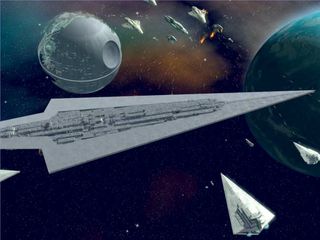
The "Star Wars" universe presents visions of many dazzling alien worlds, but they pale in comparison to the wonders of the universe.Take a tour of some real-life alien planets, moons and asteroids that could serve as actual locales for the destinations in the "Star Wars" universe, from Luke Skywalker's home planet of Tatooine to a real-life "Death Star."
Planet with 2 Suns: Tatooine
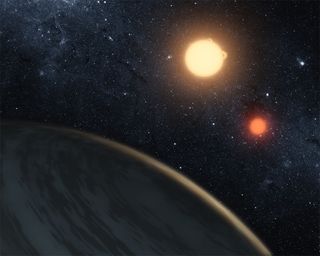
In "Star Wars Episode IV: A New Hope," Luke Skywalker memorably gazes at the sunset on his home world of Tatooine, which orbits two suns, while plaintive orchestral music plays.
Now, NASA's Kepler mission has discovered a world where two suns set over the horizon instead of just one. The planet, called Kepler-16b, is not thought to be habitable. It is a cold world, with a gaseous surface, and it circles two stars, just like Tatooine. Cue the orchestral music. [More on the Tatooine-ish planet Kepler-16b]
Mimas: Death Star
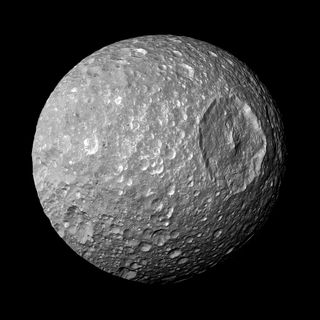
Although no one in real life (to our knowledge) has constructed a spherical space station capable of destroying a planet, Saturn's moon Mimas fits the bill as a real-life Death Star. Mimas possesses a large, circular crater that looks remarkably like the "superlaser focus lens" of the fictional Death Star. [More stunning Mimas photos]
Volcanic Planet: Planet Mustafar
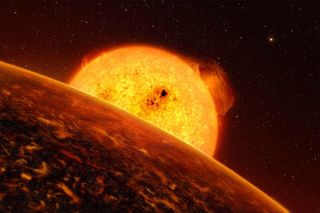
The planet where Obi-Wan and Anakin Skywalker fought their lightsaber duel over a river of lava (somewhat straining the limits of believability) resembles planet CoRoT-7b, orbiting a star some 480 light-years away. "If conditions are what we speculate, then CoRoT-7b could have multiple volcanoes going off continuously and magma flowing all over the surface," says Rory Barnes of the University of Washington in Seattle. [More on planet CoRoT-7b]
Coldest Planet: Hoth
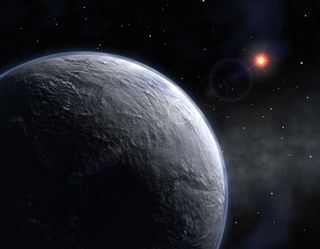
Hoth, the snow-covered planet featured during the AT-AT battle at the beginning of "Star Wars Episode V: The Empire Strikes Back," bears a resemblance to planet OGLE-2006-BLG-390. With a surface temperature of -364 degrees Fahrenheit (-220 degrees Celsius), it is nearly as frigid as Pluto. [More on the chilly planet OGLE-2005-BLG-390Lb
Earth: Coruscant
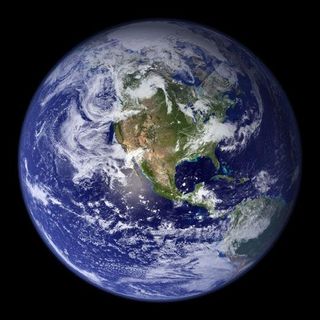
Coruscant, capital of the Empire, first figures prominently in "Star Wars Episode I: The Phantom Menace," where it is depicted as a planet entirely covered by a city. Earth, our home planet, has many megalopolises but is not yet covered by one all-consuming city. [Views of Earth From Space]
Vesta: Could Hide the Millennium Falcon
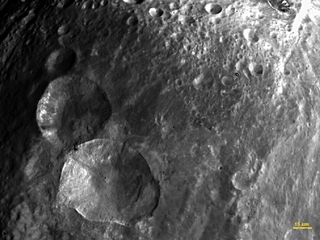
In the "Star Wars Episode V: The Empire Strikes Back" storyline, Han Solo flew the Millennium Falcon inside an asteroid to hide out from the Empire's thugs. In our solar system, the huge asteroid Vesta could offer some cover for Han and our heroes. The asteroid, the second largest in our solar system, is covered in craters and pits, according to stunning photos from NASA's Dawn spacecraft. [See amazing images of Vesta.]
Forest Moons: Endor
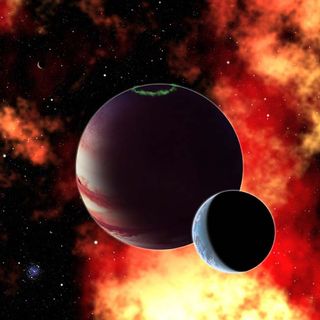
The forest moon of Endor, appearing in "Star Wars Episode VI: Return of the Jedi" sheltered the short, furry and lovable (or despised, depending on your perspective) Ewoks. Astronomers have yet to discover any moons beyond our solar system. However, researchers might soon not only be able to spot them, but also scan their atmospheres for signs of life as we know it, such as oxygen and water. [More on habitable moons around alien worlds]
Water World: Kamino, Birthplace of the Clone Army
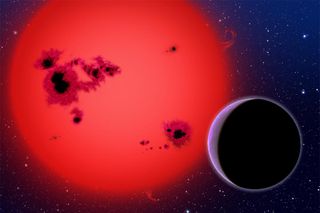
In "Star Wars Episode II: Attack of the Clones," Obi-Wan travels to the ocean planet Kamino where he discovers a clone army being constructed, then fights bounty hunter Jango Fett in pouring rain.
In real life, an extrasolar planet named GJ 1214b lies about 40 light-years away. It orbits a red dwarf star. Scientists think the thick atmosphere of GJ 1214b creates a high pressure environment that keeps water on the surface in a liquid state. That's just speculation, however. [More on watery planet GJ 1214b]
Hot Jupiter: Bespin
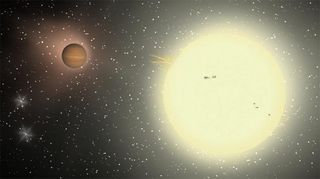
The gas giant planet Bespin appears in "Star Wars Episode V: The Empire Strikes Back," where it possesses a floating cloud city administered by Lando Calrissian.
In reality, a class of exoplanets is called "hot Jupiters," large gas giant planets that circle extremely close to their stars, and seem to orbit around their stars in the opposite direction of their parent star's spin.
One hot Jupiter in particular, called TrES-4, is among the largest ever discovered and is a puffy world, meaning it has an extremely low density. The planet's atmosphere could even be escaping into space, which could make it a bit easier for Lando to mine than Bespin. [More on the huge, puffy planet TrES-4]
Gas Giant with Moons: Yavin

In "Star Wars Episode IV: A New Hope," the planet Yavin appears as a red gas giant, and notably, its fourth moon, Yavin 4, concealed the Rebel Alliance's main military base. Though no "exomoons" have been found yet, the planned James Webb Space Telescope will be able to study the atmosphere of such an alien moon, and detect key gases like carbon dioxide and oxygen.[More on habitable moons around alien worlds]
Join our Space Forums to keep talking space on the latest missions, night sky and more! And if you have a news tip, correction or comment, let us know at: community@space.com.
Get the Space.com Newsletter
Breaking space news, the latest updates on rocket launches, skywatching events and more!
